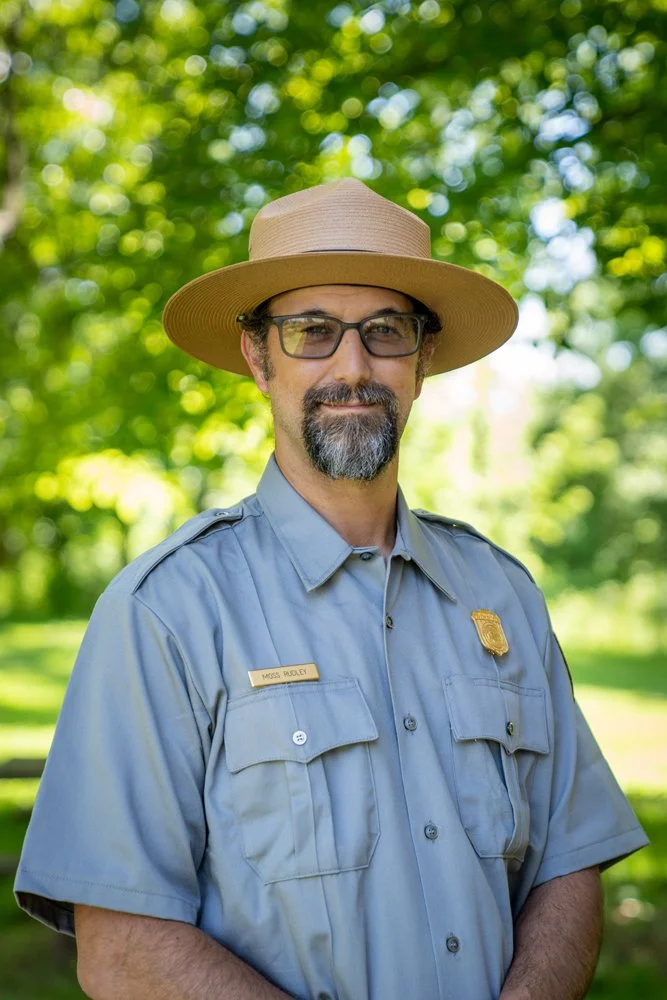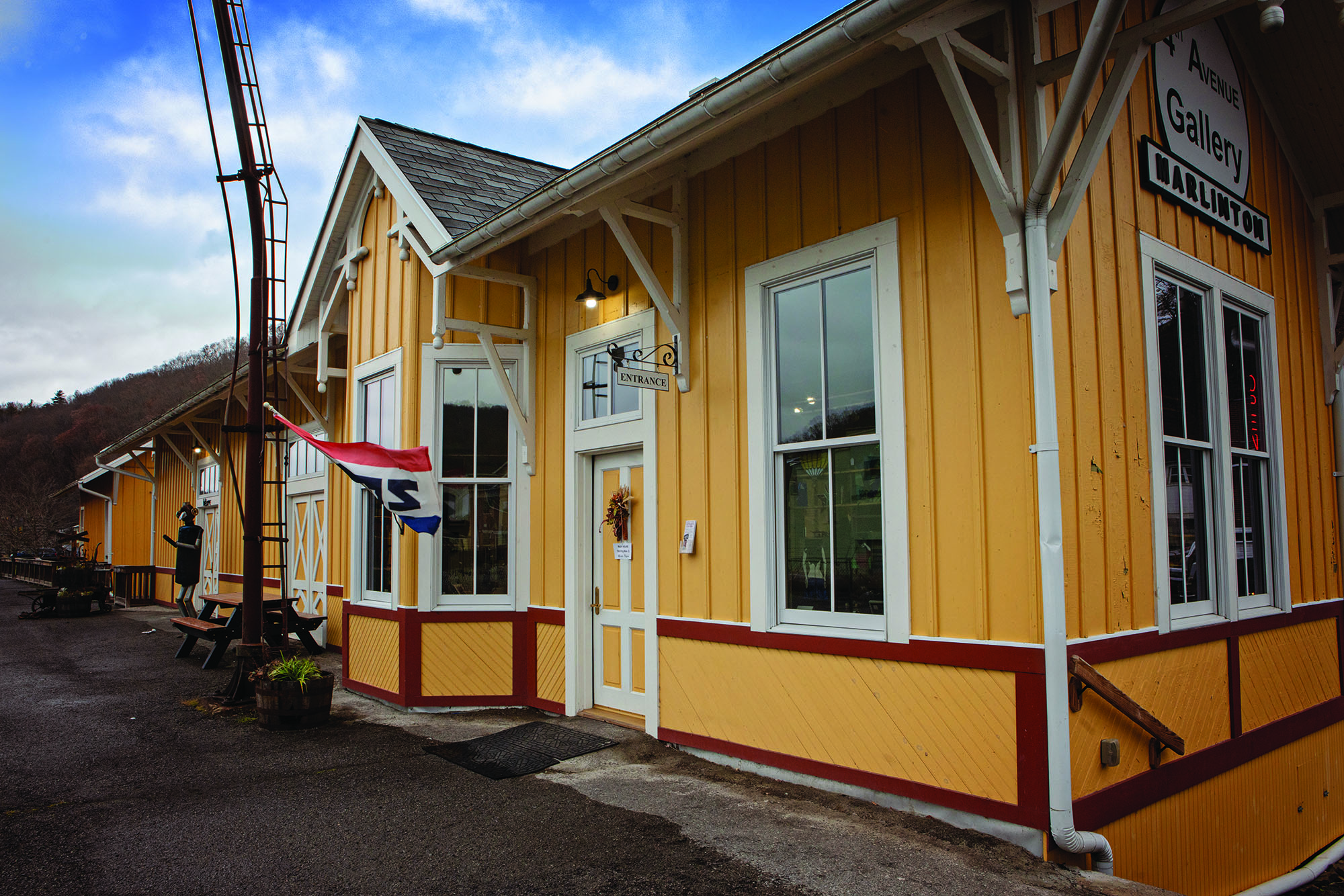Moss Rudley Saves The World (or at least parts of it)

By Greg Johnson | Photos Courtesy of Moss Rudley
When Moss Rudley played soccer for Greenbrier East High School in the early 1990s he was the team’s star goalie, known for astonishingly athletic saves that left even the opposing teams singing his praises. “Who’s that goalie?” a Woodrow Wilson player was overheard asking as he exited the stadium. “He’s awesome.”
For the past 25 years Moss, now 49, has been making awesome saves of a different kind with the National Park Service’s Historic Preservation Training Center. As the center’s director he trains, mentors and oversees 185 preservation specialists, facility managers and skilled craftspeople stationed around the country, who care for and often rescue historic structures. His career, which he describes as “have hammer, will travel”, has taken him from chatting with presidents in the Oval Office to chatting with the few remaining former patients with leprosy on Hawaii’s Molokai Island, and from repairing the Golden Gate seawall on San Francisco Bay to being attached by ropes to a 60-foot fire tower in Montana. He even got the call to spruce up the Carter family graveyard in Plains, Georgia, prior to President Jimmy Carter’s burial there.
As a young man Moss didn’t plan to take the path his life has presented. “I was smart but kind of directionless,” he admits. Gifted in math and science, he was drawn to engineering and he pursued this at Shepherd College, now Shepherd University. A job at the Yellow Brick Bank Restaurant in Shepherdstown piqued his interest in cooking, and he spent an extra year attending a culinary program. “I was a foodie before the word foodie was invented,” he says. He continued to work as a chef at the Yellow Brick Bank after graduation. The job came with an added benefit: his future wife Gale was employed at the restaurant, and they became an item that wasn’t on the menu. Several decades and three children later (Opal, 19, Zion, 14, and Nash, 7), they’re still an item.
“Even though I didn’t stay in the restaurant business, it was a great experience,” he observes. “I even catered our wedding reception. Lessons learned from kitchen work still carry over in the other things I do.”
His father had a passion for log structures and history that rubbed off. Alan had rescued a number of 1800s-era cabins and relocated them on the family farm. He moved one to Lewisburg and restored it, and even donated a log cabin to a kibbutz in Israel and shipped it there. Moss grew up helping with these projects, and he found something fulfilling about this hands-on work. “I was working behind a stove in a kitchen, and I felt like I needed to be outside, doing something more physical.” A chance conversation one evening with a restaurant patron who worked as a supervisor at the Historic Preservation Training Center led him to apply there in 2000. He was hired as a maintenance worker, became a carpenter, and later a mason. He rose gradually through the Park Service ranks to become the Center’s fourth Superintendent in 2017. His title was officially changed to Director a year ago.
Some 425 sites fall under the National Park Service umbrella. The 64 National Parks are the best-known, but there are National Monuments, National Historic Sites and National Recreation Areas that all require care. In his quarter-century with the NPS, Moss estimates he has been to 280 of them. Projects have taken him to Civil War battlefields, southern plantation slave cabins, Caribbean forts, and isolated structures in the middle of nowhere. He’s flown or driven to many, but he’s had to access a few with pack mules.
All his projects involve places of historical relevance, but the five years he spent supervising a crew at the White House rank among his most memorable. “The White House is unique. First and foremost, it’s a private residence, but it’s also a tourist stop. It’s operated by four different Federal agencies and the military. We undertook the restoration of the windows and parapet in the Oval Office, we worked in the Cabinet Room, and we replaced the North and South Porticos. Everything at the White House is crunched for time. You’ve got a 6-week job and they tell you it has to get done in 9 days, so you work 16 hours a day and live out of a suitcase in a hotel. But you get to hang with the President. I’ve chatted with Bush, Obama and Trump.” And in a Small World encounter, he ran into former Lewisburg resident Matt Detch, who was working at the White House as a Secret Service agent.
Moss with the Sculptor and Crew who carved the MLK memorial, working to fix inscription.
Another favorite project was working in St. Croix, in the U.S. Virgin Islands, on a Danish colonial fort. “Six weeks in paradise, driving on the wrong side of the road,” he recalls fondly.
Moss is based at the Historic Preservation Training Center in Frederick, Maryland. From there he oversees tradespeople, architects and engineers in 15 locations as far-flung as Seattle, Flagstaff, Albuquerque, International Falls, Natchez, Chattanooga, Pensacola and Puerto Rico. His current role is administrative, and while he misses the opportunity to use his tools, he enjoys not having to spend as much time away from home.
He tries to be philosophical about the changes new administrations in Washington bring. “Every administration has different perspectives and different priorities. We have rotating Secretaries of the Interior and National Park Service Directors. We have to educate them about who we are and what we do. We’re lucky because we do very visible work and our program is narrowly defined: we do historic preservation, we teach trade skills, we show people how to apply them, and we do it through hands-on work on projects. We’re useful, and there’s not much for people with different political beliefs to dislike. That said, we’re always trying to find out what they want us to do, and it’s stressful when they’re not sure.”
Moss at dedication to the Iowa Memorial at Vicksburg National Military Park
“I try to stay ahead of the game. When the current administration released a recent Executive Order, I noticed there was a bullet point that said ‘Fix Independence Hall by July 2026’. I made a call, and now I have 30 people fixing Independence Hall. They didn’t have to get bids or contract it out, which would have delayed things to the point of not being able to have it completed in time. We could start right away because we’re federal workers. We can work around the bureaucracy and respond quickly.”
“Another example is Jimmy Carter’s house. When he started having mobility issues and he fell and was hospitalized, within a week we had a crew putting a handicapped ramp on his house. A few months later we added one in back. We like to respond with action.”
When Rudley started at the Historic Preservation Training Center, the program had 30 employees. While this number grew significantly over the years, so did their average age, at one point in the mid-fifties. One of his goals has been to attract young tradespeople to preservation careers. He gives presentations at high schools for this purpose. In the process he discovered that art classes are a fertile recruitment ground. It’s often a challenge for artists to make a living, and he points out that Park Service craftspeople get regular paychecks with benefits. He created internships and the Traditional Trades Apprenticeship Program to attract young people and military veterans to the carpentry, masonry and woodcraft divisions. Thanks to these efforts, his cadre’s average age is now in the thirties.
Moss and Coworkers deployed at President Jimmy Carter Funeral in Plains, GA
When asked what he thinks the future will bring, Moss, who lives in Hedgesville in Berkeley County, admits his main goal is to return to Greenbrier County.
When asked what he thinks the future will bring, Moss, who lives in Hedgesville in Berkeley County, admits his main goal is to return to Greenbrier County. Several years ago he purchased 114 acres adjacent to the family farm with hopes of eventually living there. He’s not sure what he will do; continuing to work for the National Park Service in some capacity is one option. He also envisions training young people in historical preservation work by offering them opportunities to do hands-on work on local projects.
Even after 25 years on the job, and pushing the golden age of 50, Moss Rudley conveys an unbridled enthusiasm for his work with the Park Service. “I have an amazing job,” he says, and you know he really believes it.








